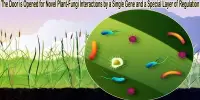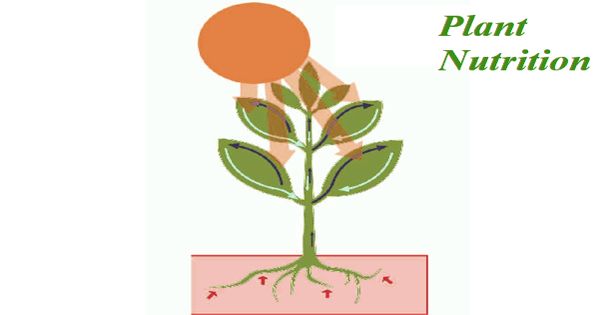Food is a composite mixture of substances which when consumed performs certain functions in the body. These functions are
(1) yielding energy,
(2) building and maintaining the body and
(3) protecting the body and regulating the tissue functions.
Nutrition is the process whereby living organisms utilize food for maintenance of life, growth, the normal functioning of tissues and organs, and the production of energy.
Diet and Nutrients
Diet is the total solid or liquid foods consumed by an individual or by a population group, either on an average basis or during a specified period.
Nutrients are the constituents in food that must be supplied to the body in suitable amounts. These include water, proteins, fats and fatty acids, carbohydrates, minerals and vitamins.
Malnutrition
Malnutrition is an impairment of health resulting from a deficiency, excess or imbalance of nutrients.
Primary malnutrition may be due to several reasons which include (1) lack of food or means to have access to food, (2) lack of elementary knowledge of food and nutrition, (3) refusal to take foods, (4) fad foods and (5) lack of teeth or inability to chew.
Secondary malnutrition is due to some difficulty or alteration in the digestion, absorption or assimilation. A number of conditions responsible for this are (1) disorders of the gastrointestinal tract, (2) protracted immobilization, (3) fever, (4) surgery and (5) drug therapy.
Protein energy malnutrition (PEM) is the most common form of malnutrition affecting the millions of children in the under developed countries. This condition is rather uncommon in adults. The important contributory factors to PEM are (1) lack of resources to buy food leading to an inadequate food supply, (2) a bulky diet consisting very low calories, (3) diminished appetite because of infection and (4) ignorance of family members about nutritive values.
The Nutrients
Carbohydrates
There are three types carbohydrates- sugars, starch and fibre. Sugars are monosaccharides like sucrose. Starch is polysaccharide and is stored in plant roots, tubers or underground stems. Fibre containing non-nutrient cellulose helps in the formation of bulk of the waste of digestive system.
Functions:
- Provides main source of energy
- Helps the body to use protein and fat efficiently
- Supply fibre for better digestion
- Foods rich in carbohydrates supply other nutrients too.

Sources: Carbohydrates mainly come from the food groups of cerals, tubers, fruits, sweets etc.
Proteins
Proteins are made of amino acids. About 20 such amino acids are required by the human body of which the body cannot produce eight. These have to be supplied from outside and are known as essential amino acids. Protein from different plant sources may be combined in such a way that the result is equivalent in nutrient value to animal protein (goal of vegetarian diet).
Functions:
- Helps to build new cells and maintain or repair the injured ones.
- Used for energy when carbohydrates or fats are in short supply.
- Protein foods are also rich in fats, carbohydrates, vitamins and minerals.
- Takes part in defense mechanism.
- Produces enzymes and coenzymes.
Sources: All animal foods (meat, poultry, milk, fish, etc.), nuts, dried peas and beans, lentils and plants foods (wheat, corn, rice, etc.).
Fats
Fats or lipids are made of fatty acids, triacylglycerol, phospholipids, glycolipids, etc. The most important class of dietary fats from an energy perspective is triacylglycerol, constituting more than 90% of total dietary lipids.
Functions:
- Supply essential fatty acids
- Supply energy
- Carry fat soluble vitamins
- Give flavor to food.
Sources: meat, milk and milk products like cheese, cream, ghee, butter, ice cream, yoghurt, plant oils, nuts, eggs, etc.
Minerals and vitamins
Table-1: Fat soluble vitamins
| Vitamin | Functions | Food Sources |
| Vitamin A | Prevention of nutritional blindness, phrynoderma, loss of skin integrity. | Liver, egg yolk, butter, milk, fatty fish, deep-yellow and deep-green fruits. |
| Vitamin D | Prevention of rickets and osteomalacia; helps formation of strong teeth. | Fish liver oils, fatty fish, egg, butter, cheese, full fat milk. Skin can produce vitamin D by the activity of altraviolet radiations of the sun falling on it. |
| Vitamin E | Acts as antioxidant; keeps oxygen in body from destroying other nutrients. Reproductive role in human being is still inconclusive. | Plant oils, whole grain cereals, eggs, meat, milk, green leafy vegetables. |
| Vitamin K | Helps blood clotting. | Green leafy vegetables, cereals, legumes, milk, eggs meat and fish. |
Table-2: Water soluble vitamins
| Vitamin | Functions | Food Sources |
| Vitamin C | Severe deficiency leads to scurvy. Helps in formation of collagen, metabolism of tyrosine, absorption of iron, bone formation and electron transport. | Citrus fruits, tomatoes, guava, pine apple, ripe papaya and some green leafy vegetables like drumstick amaranth. |
| Thiamin (Vitamin B1) | Severe deficiency leads to beriberi; deficiency also to impaired cellular functions. | Whole cereals, pulses (legumes), oilseeds and nuts, dried beans. |
| Riboflavin (Vitamin B2) | Deficiency leads to oral and facial lesions (damage to skin, dermatitis) | Liver, whole and skim milk powder, eggs, meat and fish, whole cereals, legumes and green leafy vegetables. |
| Niacin | Severe deficiency leads to pellagra (cracking of the skin) | Meat, poultry, fish, milk, liver, peanut. |
| Pyridoxin | Helps many biochemical functions, influences hormones, metabolism of lipid | Meat, liver, kidney, whole grain cereals, peanuts, soyabeans. |
| Cobalamin (Vitamin B12) | Deficiency leads to pernicious (deadly) anaemia. | All animal foods. |
Table-3: Minerals
| Minerals | Functions | Food Sources |
| Calcium | Deficiency leads to decrease rate of growth, negative calcium balance, osteoporosis, tetany. | Milk and milk products, sesame seed, green leafy vegetables, small dried fish. |
| Iron | Binds with protein to make haemoglobin | Liver, meat, egg yolks, dark green leafy vegetables, dried fruits, whole grain and iron fortified foods. |
| Iodine | Prevents goitre. | Salt water fish, sea food, iodized table salt. |
| Zinc | Helps healing, normal reproduction, cell growth. | Animal proteins. |
| Fluorine | Prevents dental caries. | Normally present in drinking water. |
Balanced Diet
A balanced diet is one which contains all the proximate principles (protein, fat and carbohydrate), minerals and vitamins in due proportions and at the same time meeting the total energy requirements for maintaining health, vitality and well-being of a person (see Table). Experts agree that 12% of your daily intake of kilocalories should be from proteins, 30% or less from fats, and 50% from carbohydrates. Lack of balanced diet may lead to malnutrition.
Table-4: Balanced diet in adult men and women
| Food items (in gm) | Adult Men | Adult Women | ||||
| Sedentary | Moderate work | Heavy work | Sedentary | Moderate work | Heavy work | |
| Cereals | 460 | 520 | 670 | 410 | 440 | 575 |
| Pulses | 20 | 25 | 30 | 20 | 22.5 | 25 |
| Egg or meat/fish | One egg or 30gm meat/fish | One egg or 30gm meat/fish | ||||
| Leafy vegetables | 40 | 40 | 40 | 100 | 100 | 50 |
| Other vegetables | 60 | 70 | 80 | 40 | 40 | 100 |
| Roots & tubers | 50 | 60 | 80 | 50 | 50 | 60 |
| Milk | 150 | 200 | 250 | 100 | 150 | 200 |
| Oil & fat | 45 | 50 | 70 | 25 | 30 | 45 |
| Sugar/jaggery | 30 | 35 | 55 | 20 | 20 | 40 |
Source: Indian Council of Medical Research.
















